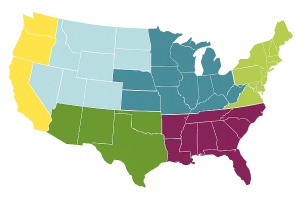Clover Seeds: Resilient, Soil-Loving, and Buzz-Worthy
Clover to the rescue! Whether you’re refreshing a tired lawn, feeding your soil, or rolling out the welcome mat for pollinators, Clover is the garden multitasker you’ve been dreaming of. These mighty little plants act as natural fertilizers, reduce the need for chemicals, and stand strong where fussier plants flounder. From shady patches to soggy spots, Clover covers it all—while attracting bees, butterflies, and even the occasional hummingbird.
Why Grow Clover Seeds? It’s Easy, Eco-Friendly, and Enchanting
Looking for a low-maintenance marvel with high-impact charm? Clover checks every box. These fast-growing groundcovers form lush, emerald carpets that crowd out weeds and stabilize the soil beneath your feet. Thanks to their nitrogen-fixing roots, they give back to the earth with every leaf—no synthetic fertilizers needed. Plus, they’re drought-tolerant, deer-resistant, and perfectly happy in less-than-perfect soils. Over time, they naturalize gently, spreading green magic wherever they grow.
Clover Varieties to Match Every Meadow Dream
Not all Clovers are cut from the same cloth—each variety brings its own unique flair to the garden. Dutch White Clover forms a dense, flowering mat that’s perfect for lawn alternatives and erosion control, offering beauty and stability in equal measure. Microclover, with its tiny, tidy leaves, blends seamlessly with turfgrass to create a greener, lower-maintenance lawn that needs less mowing and fewer inputs. For those looking to boost soil health in a flash, Crimson Clover is a standout, celebrated for its vibrant red blooms and rapid cover crop performance. Whether you’re after a lush living lawn, a pop of color, or a feast for pollinators, there’s a Clover ready to rise to the occasion.
How (and When) to Sow Clover Seeds
Clover loves cool starts—sow in early spring or fall when moisture is reliable and temps are mild. Choose a spot with full sun to partial shade, and prep by clearing weeds and loosening the soil’s surface. Scatter seeds evenly (on their own or mixed with grass), then gently rake them in for good soil contact. Water well and keep the area moist until germination, which usually takes 7–14 days. Important: steer clear of pre-emergent herbicides—they’ll stop your Clover before it sprouts.
Once It Grows, Let It Go (Mostly)
Clover is delightfully low-maintenance once established. It rarely needs fertilizing—those nitrogen-fixing roots do the heavy lifting—and pests tend to pass it by. Water young seedlings regularly, then let rainfall do the rest. Mowing is optional: trim for a tidy look, or let it bloom and buzz with pollinators. Overseeding each spring can help fill in gaps and keep your Clover patch thriving year after year.

